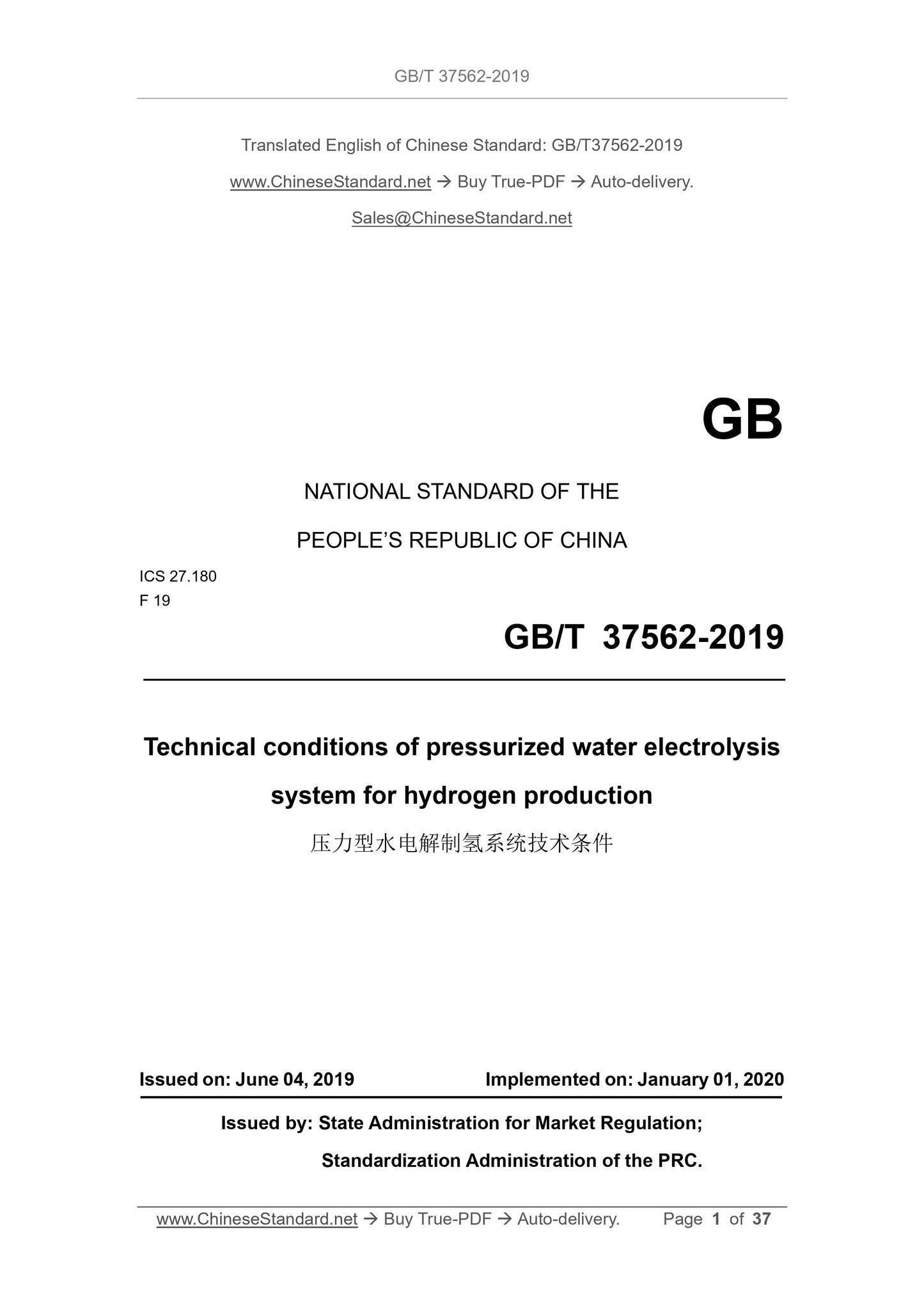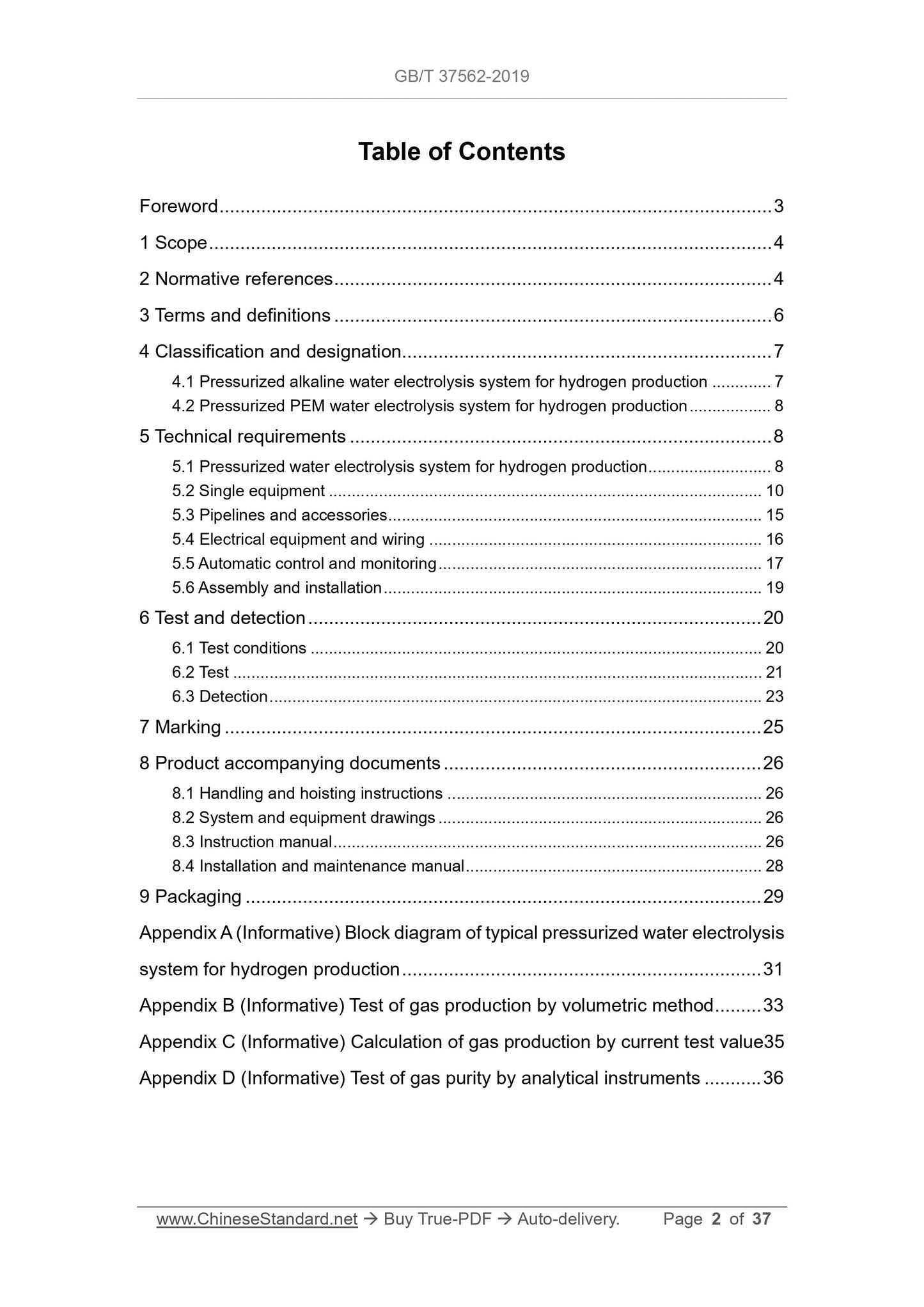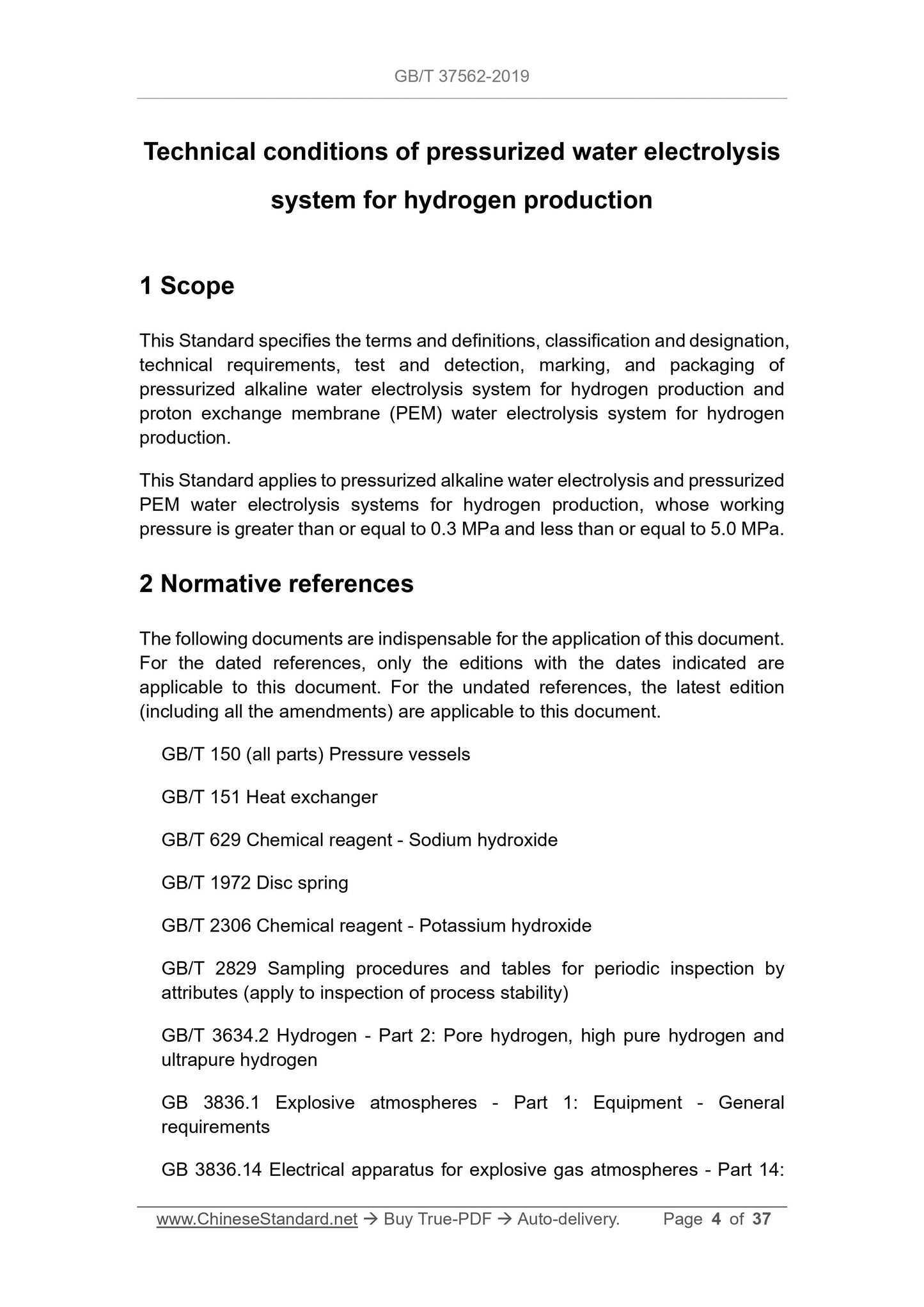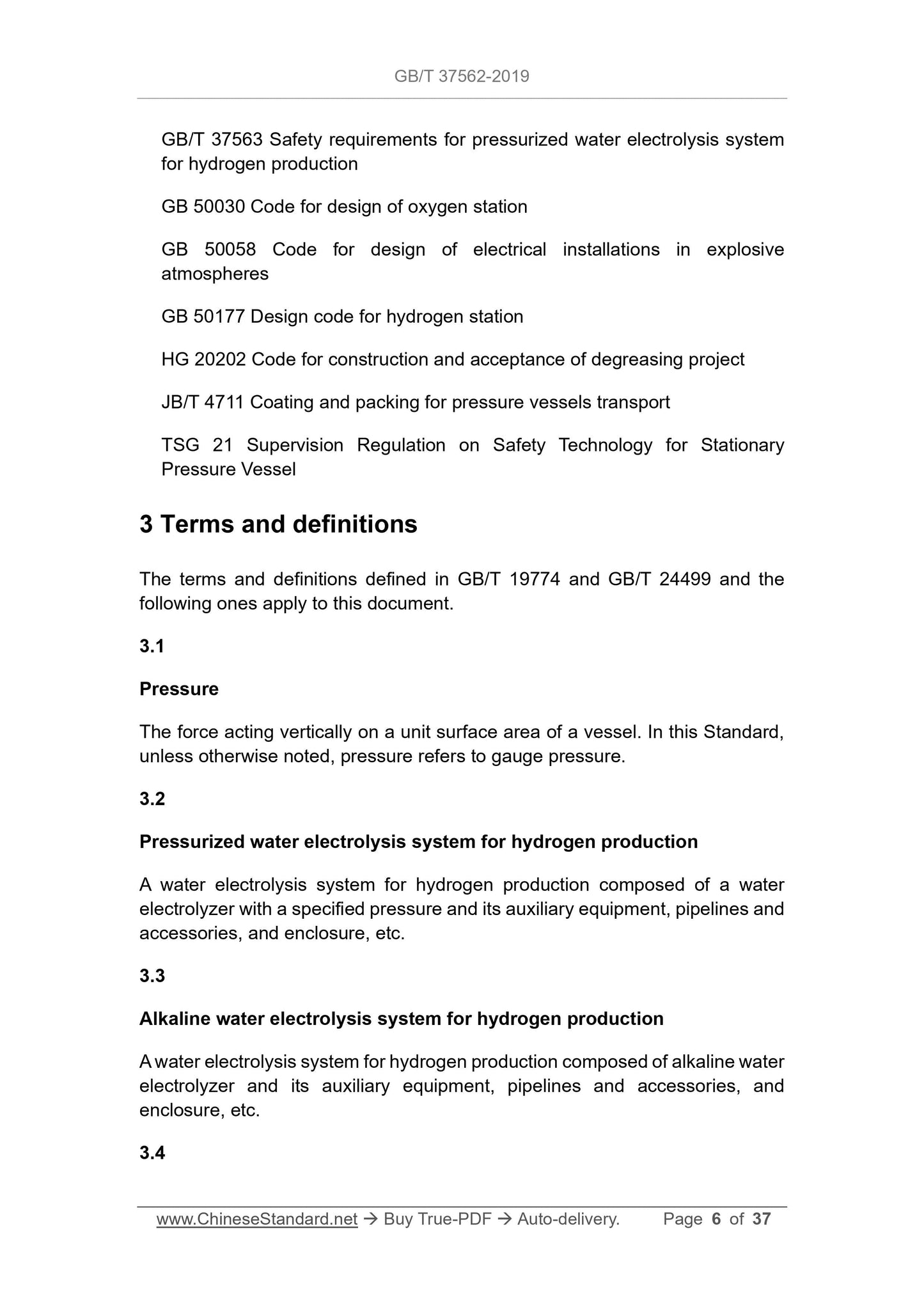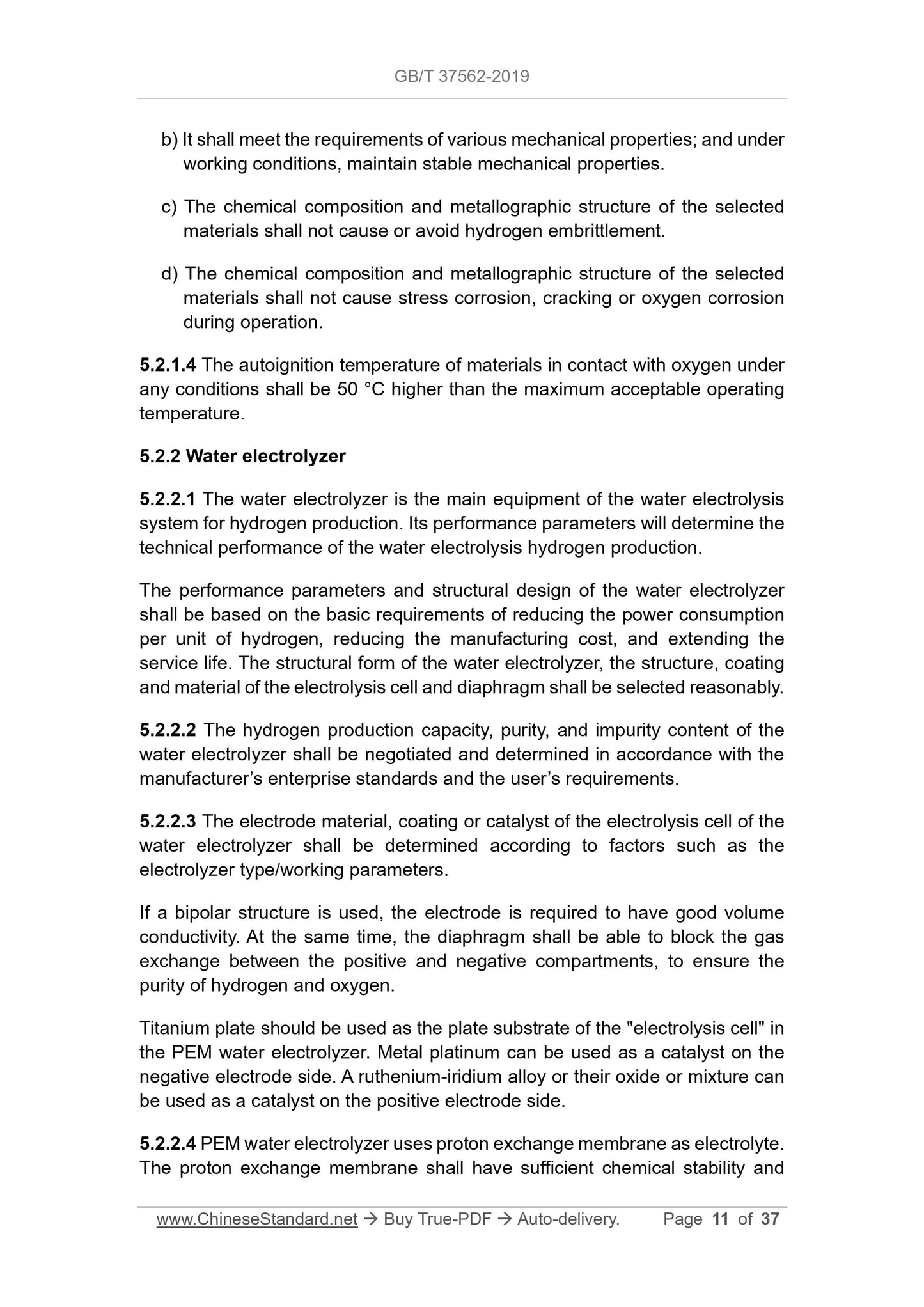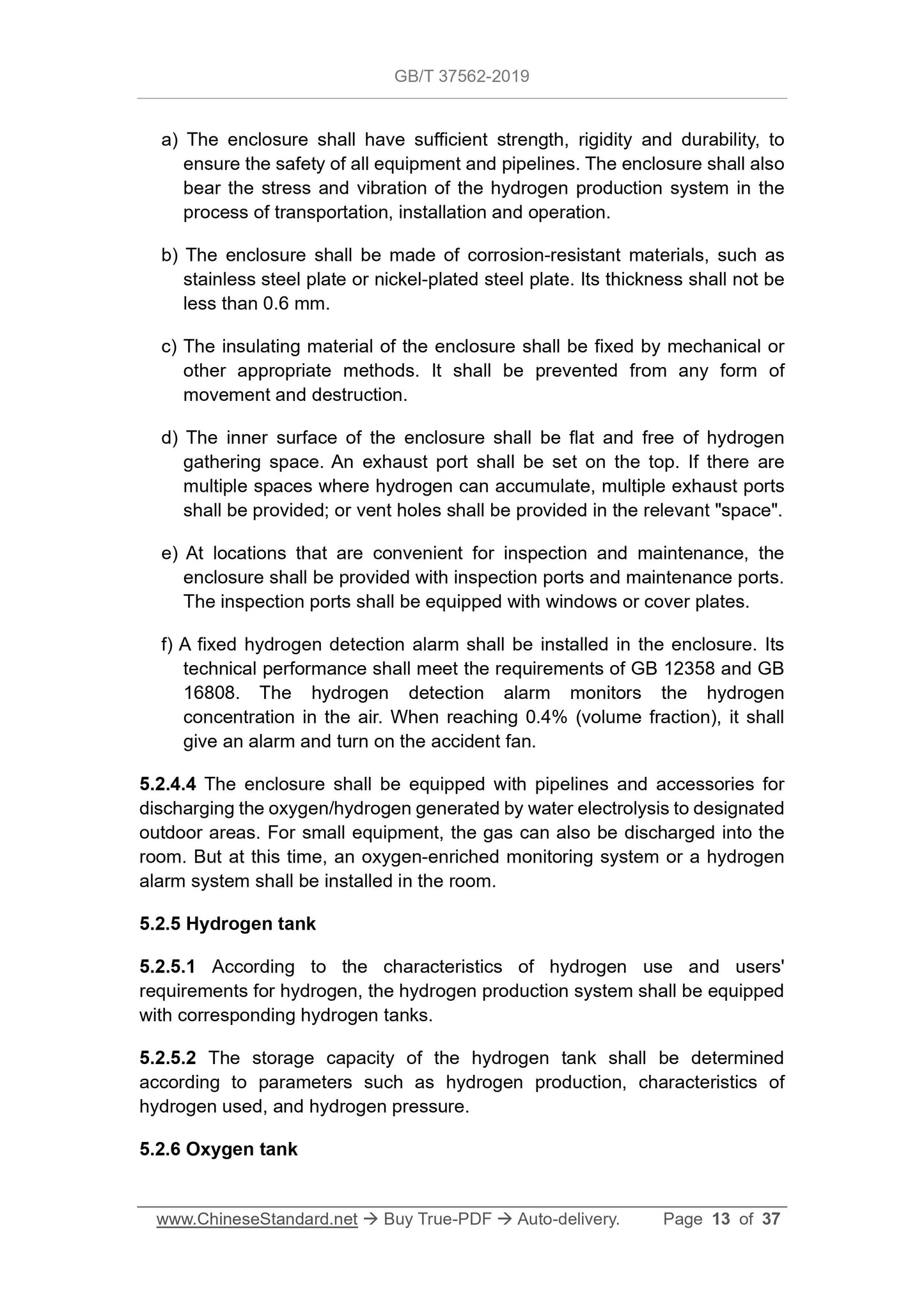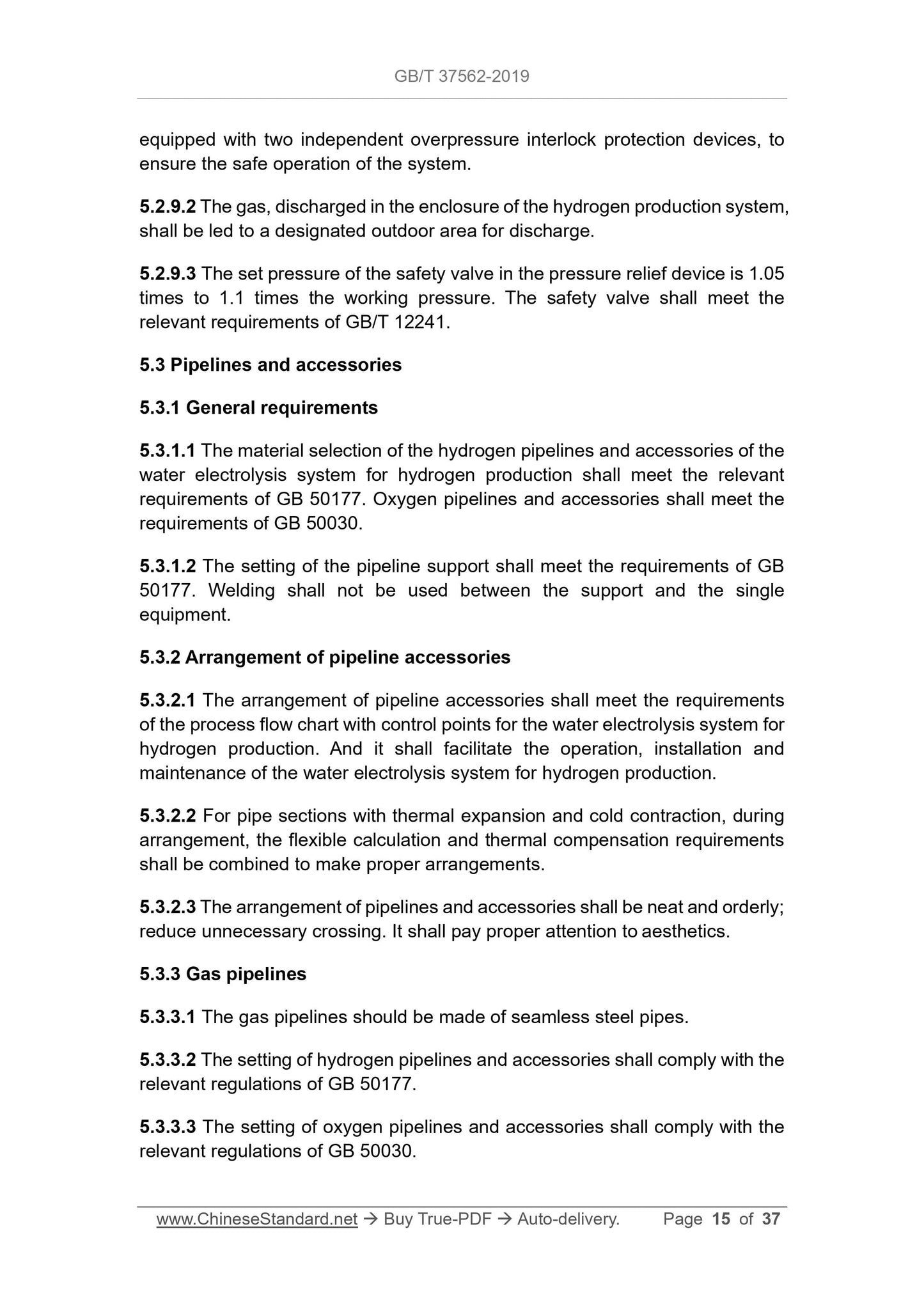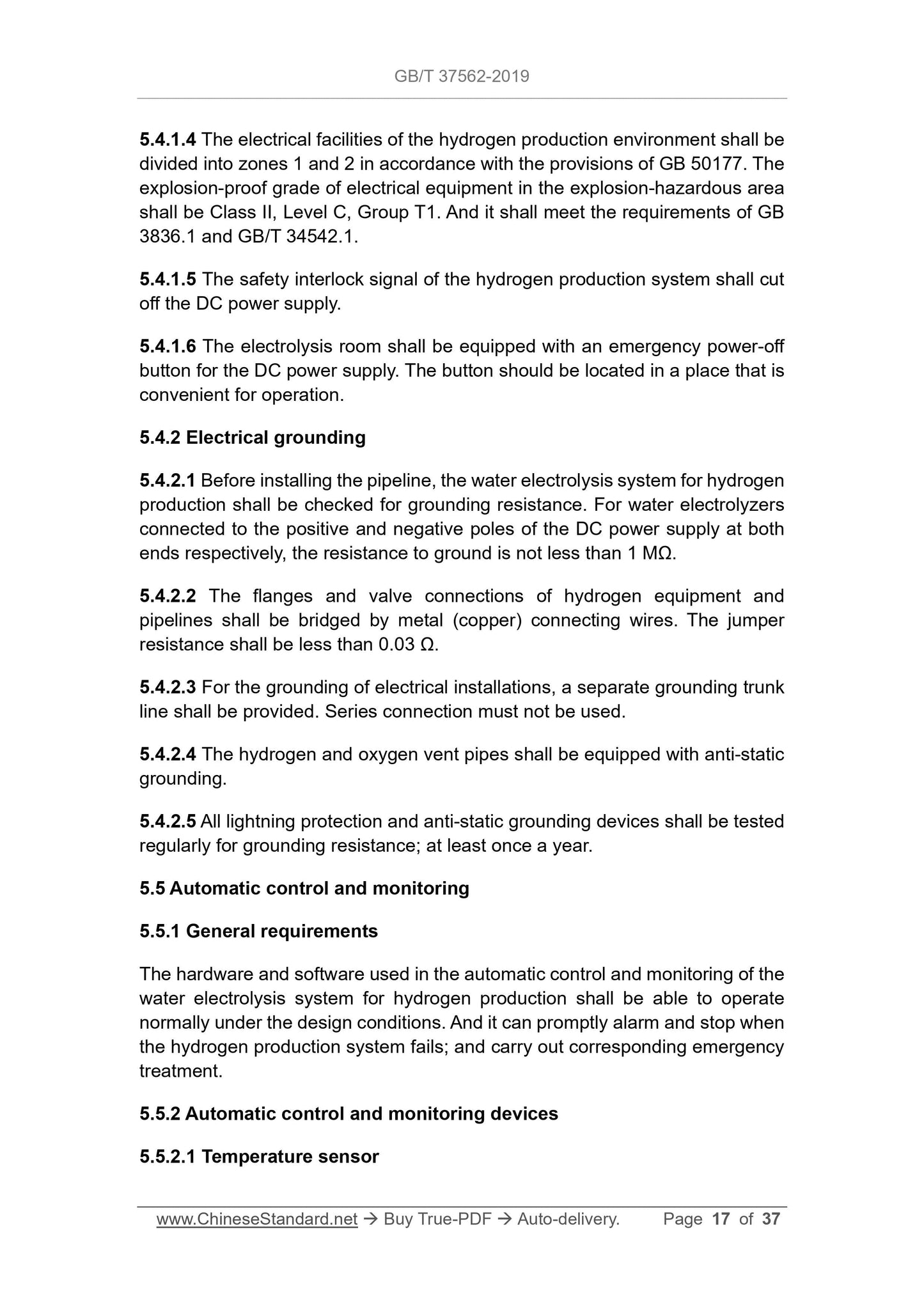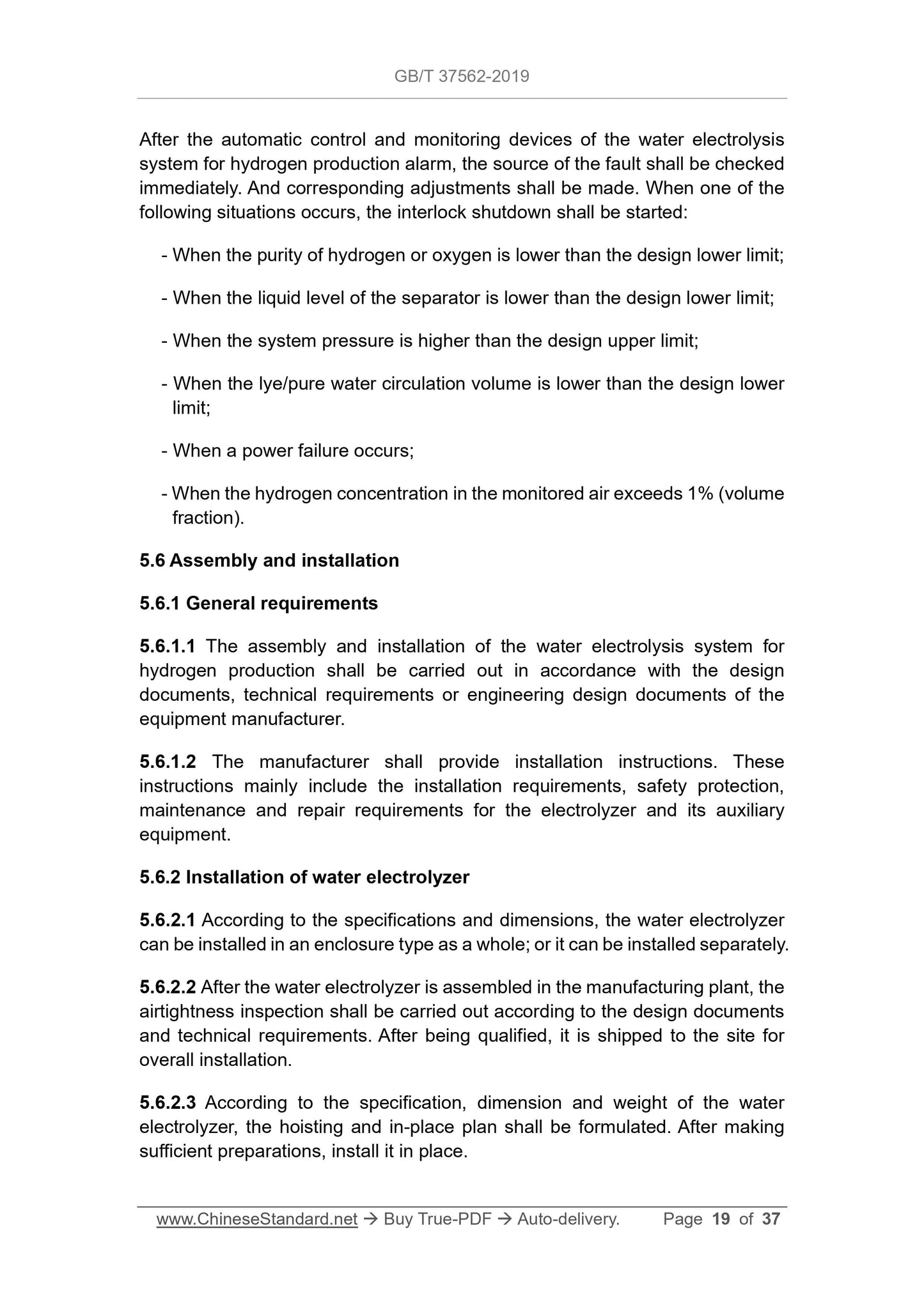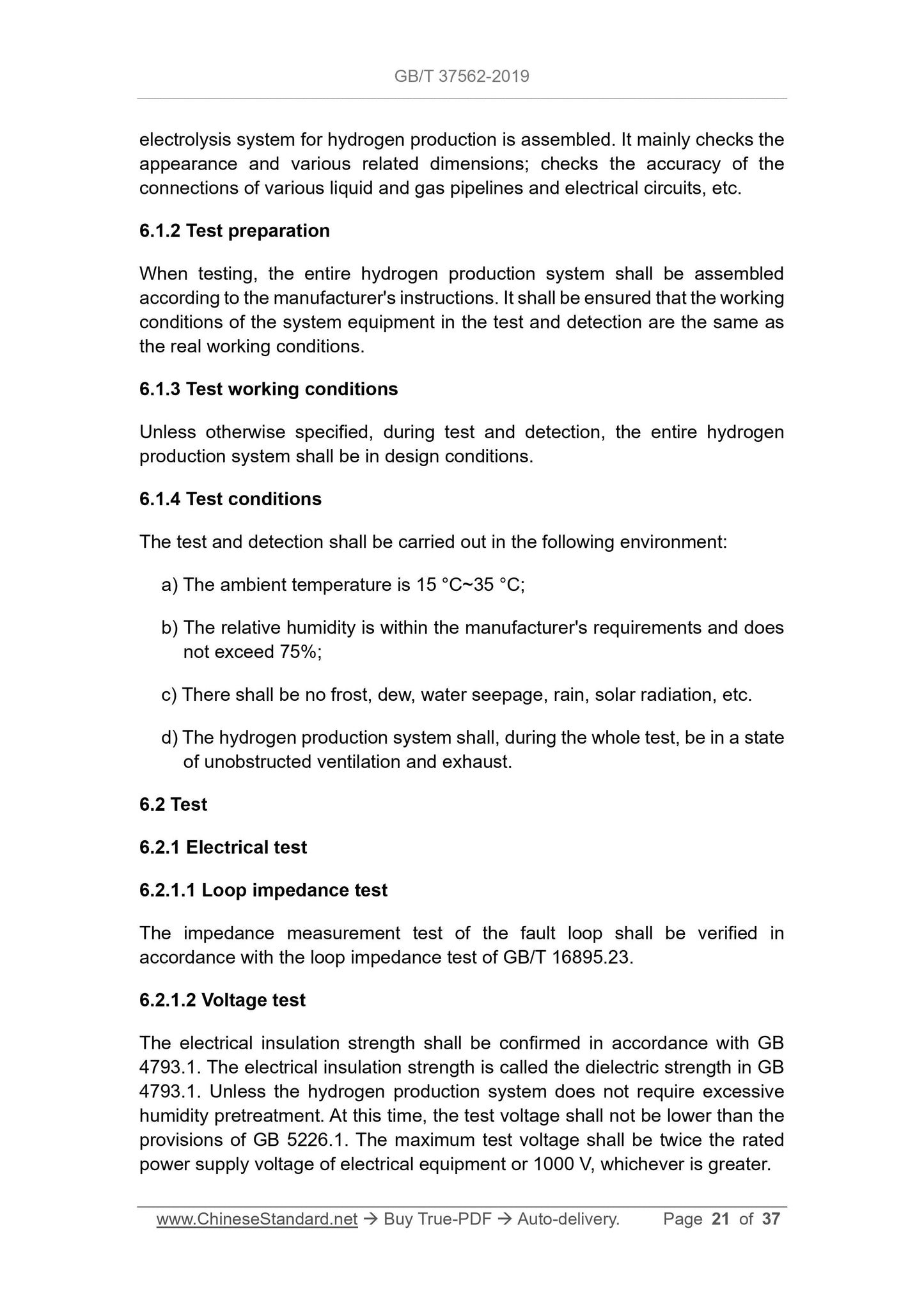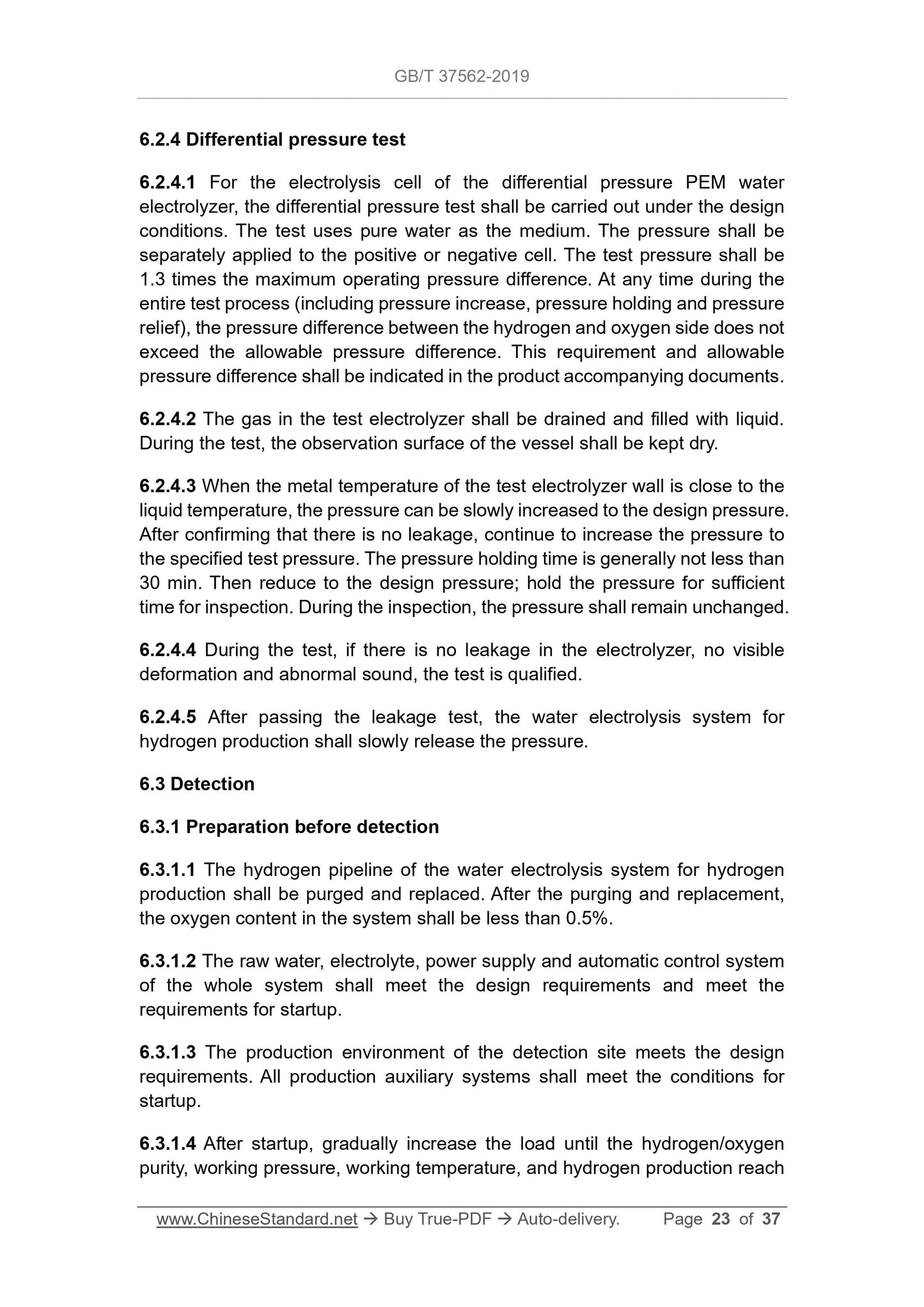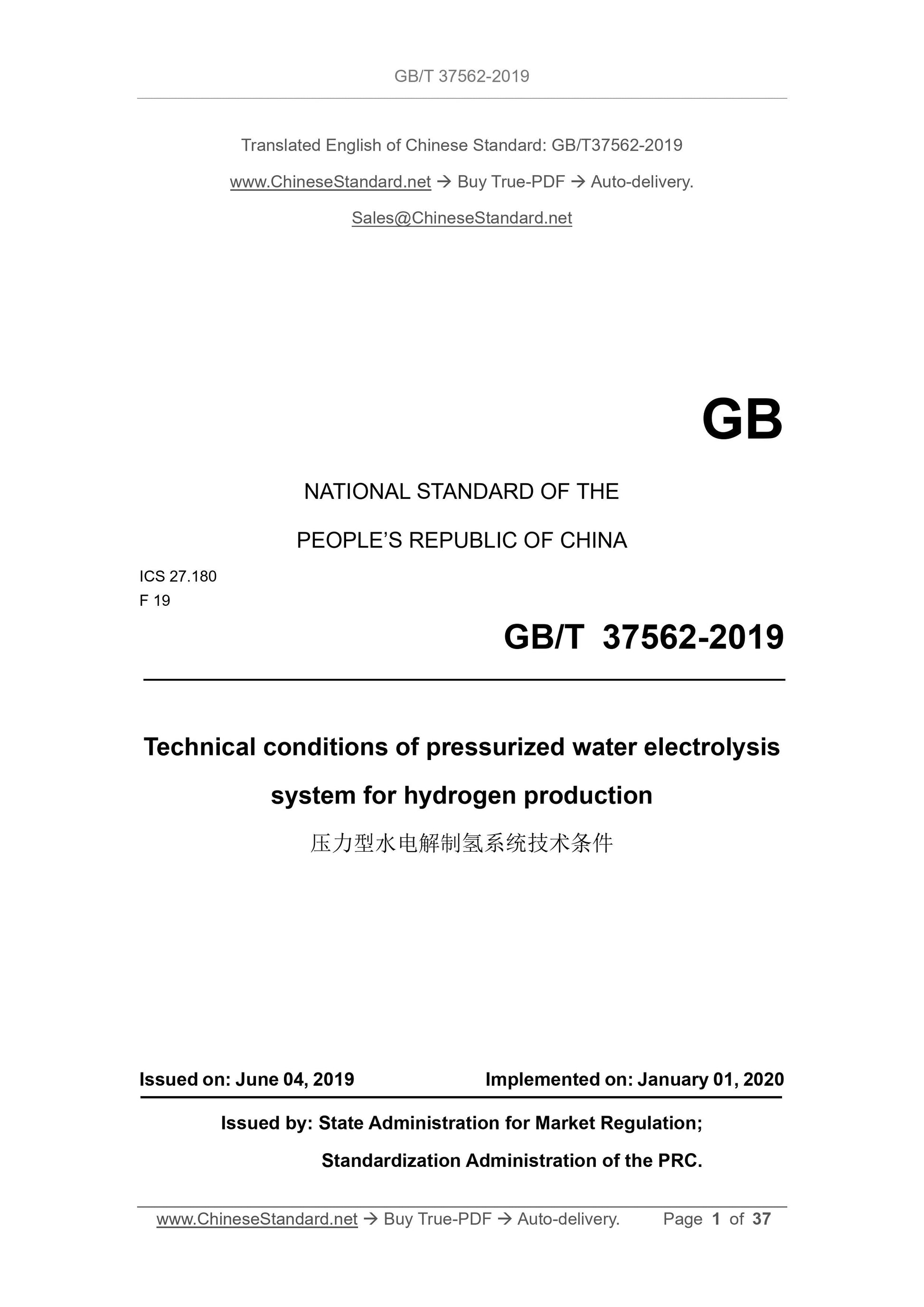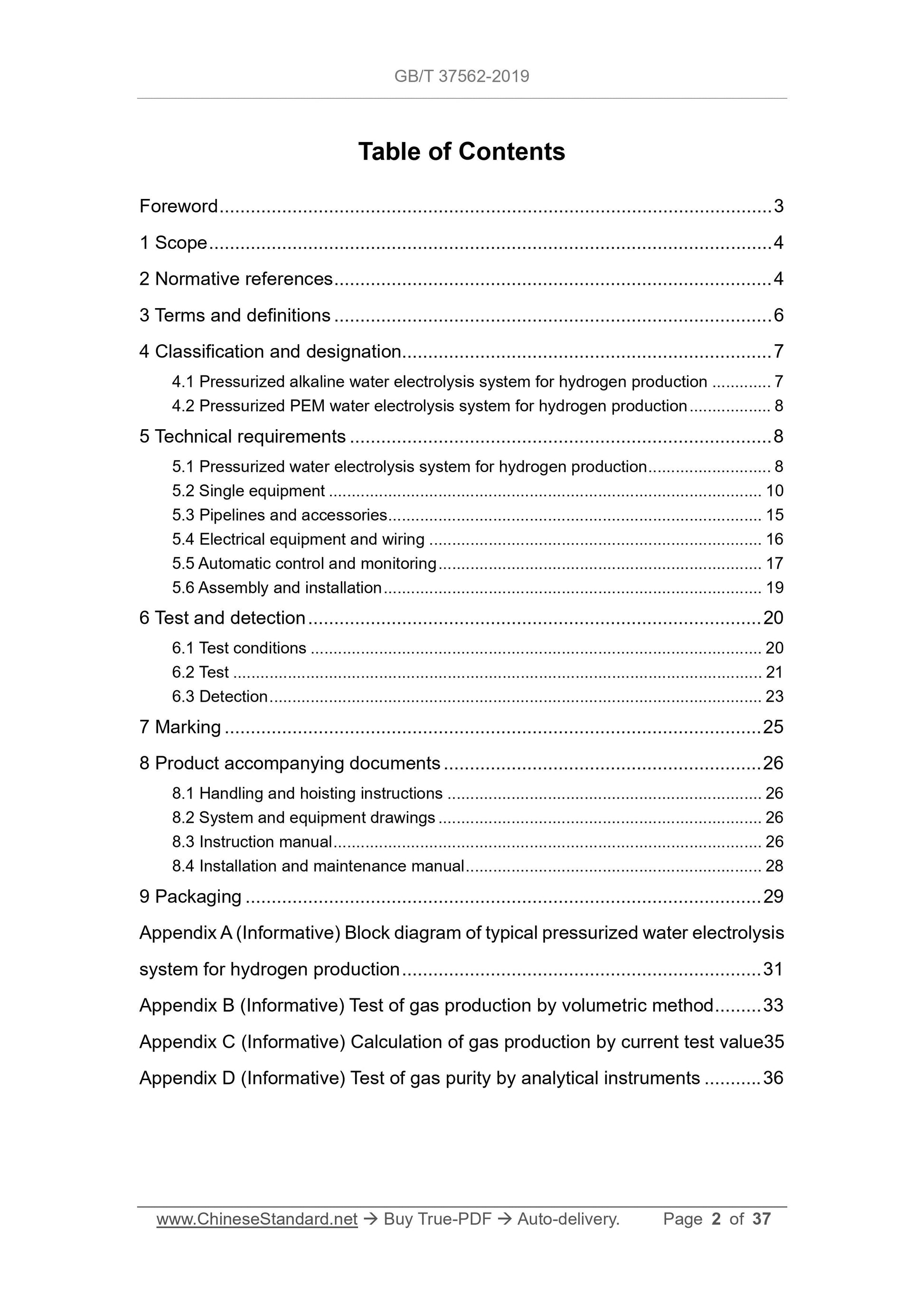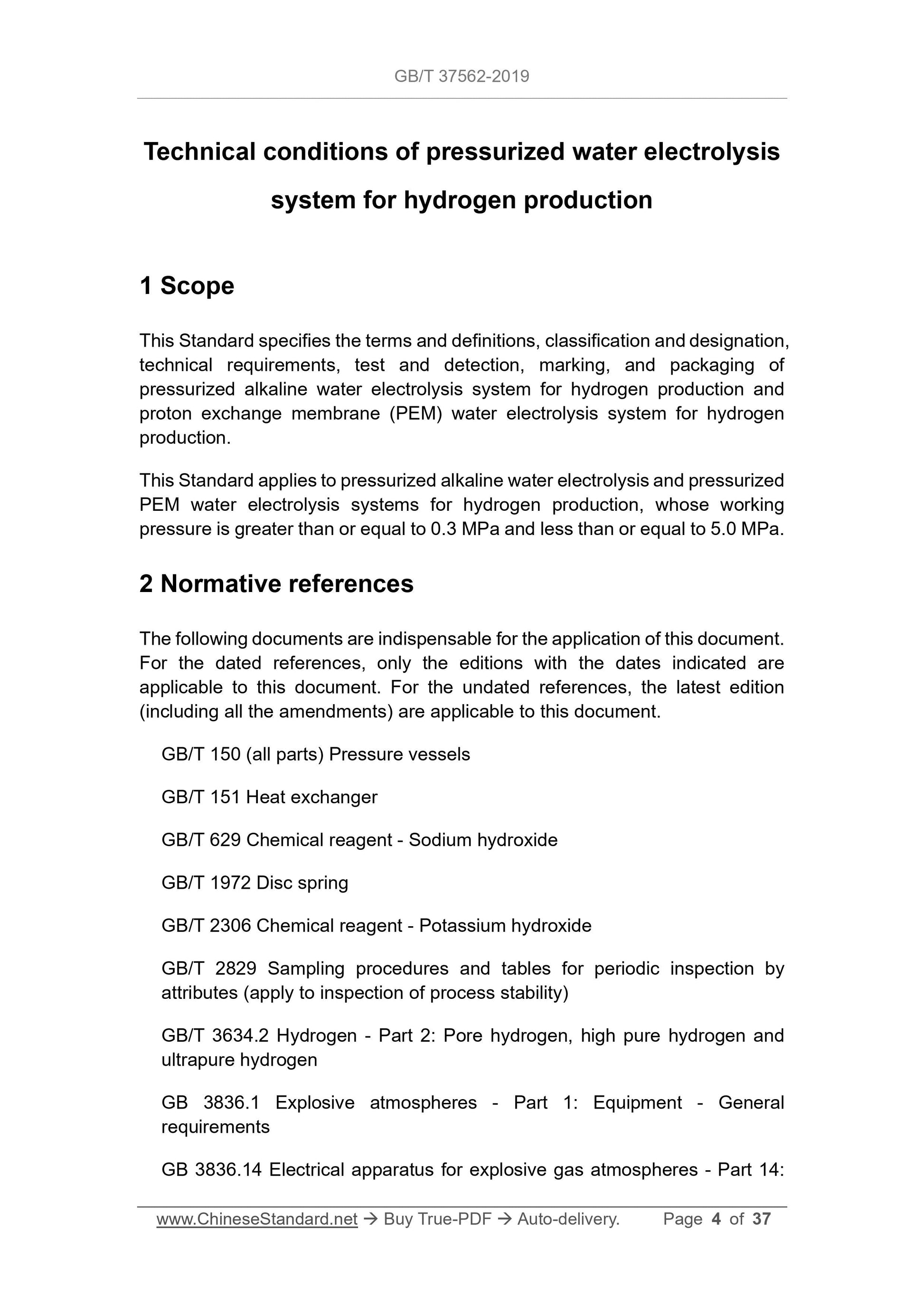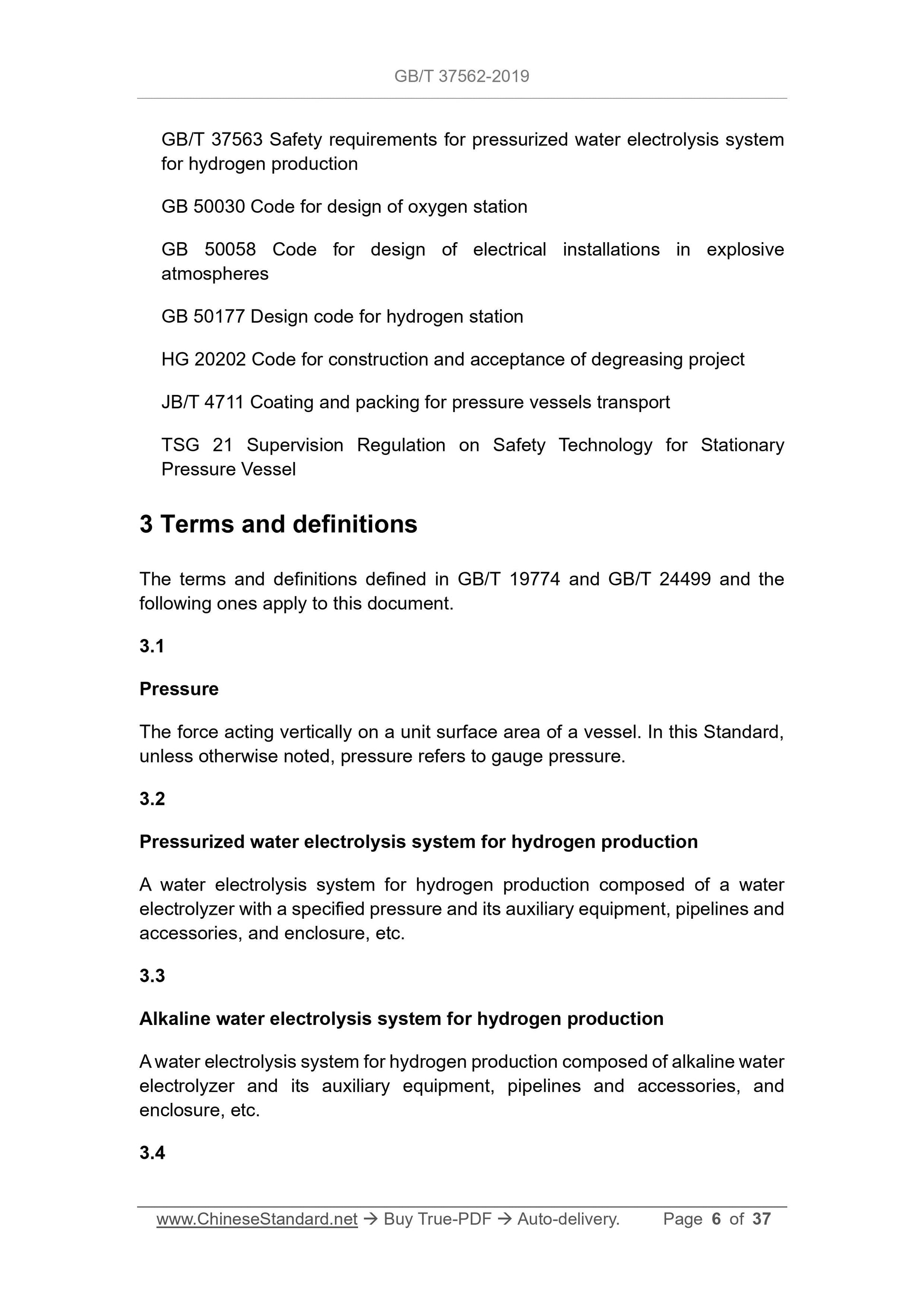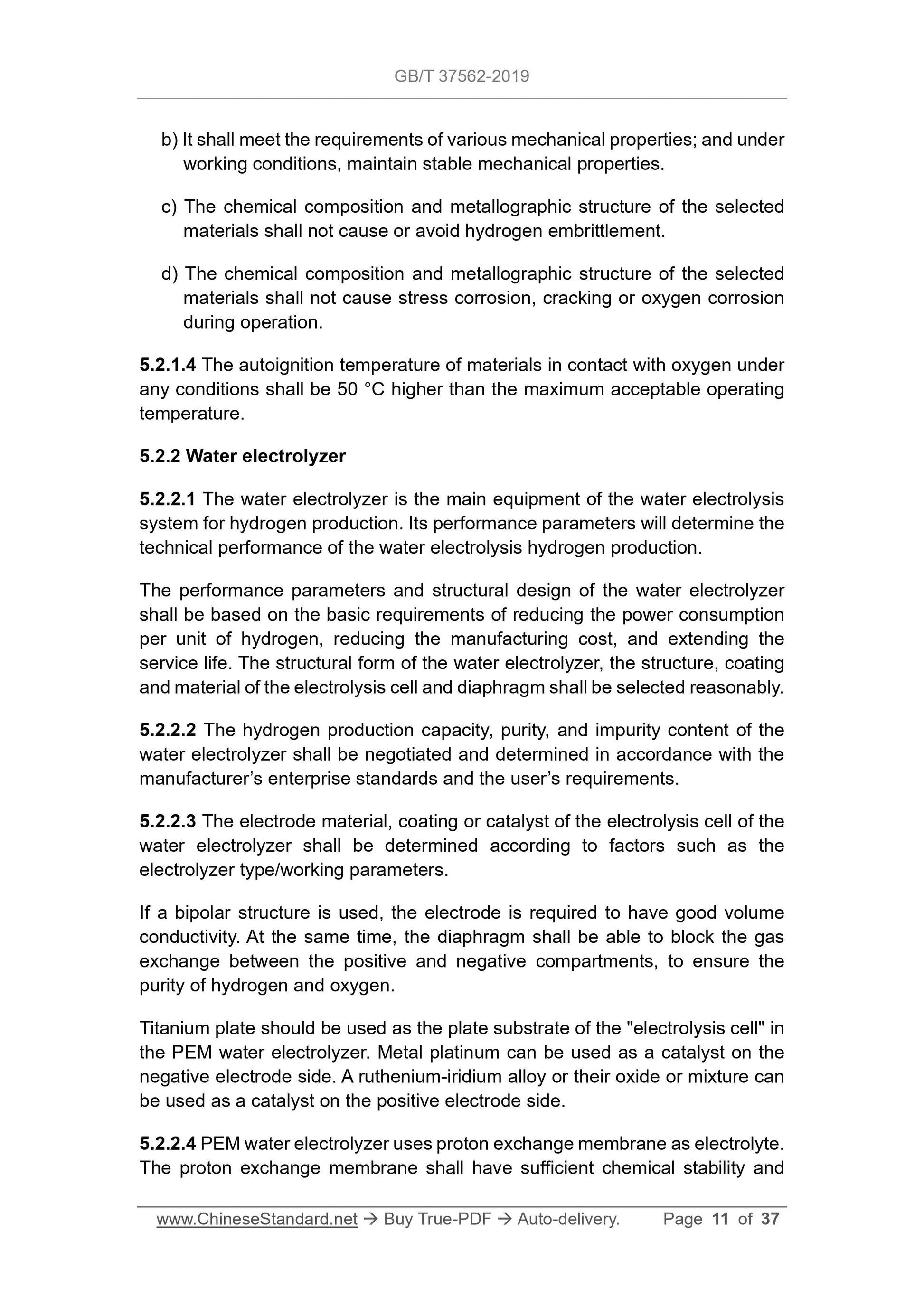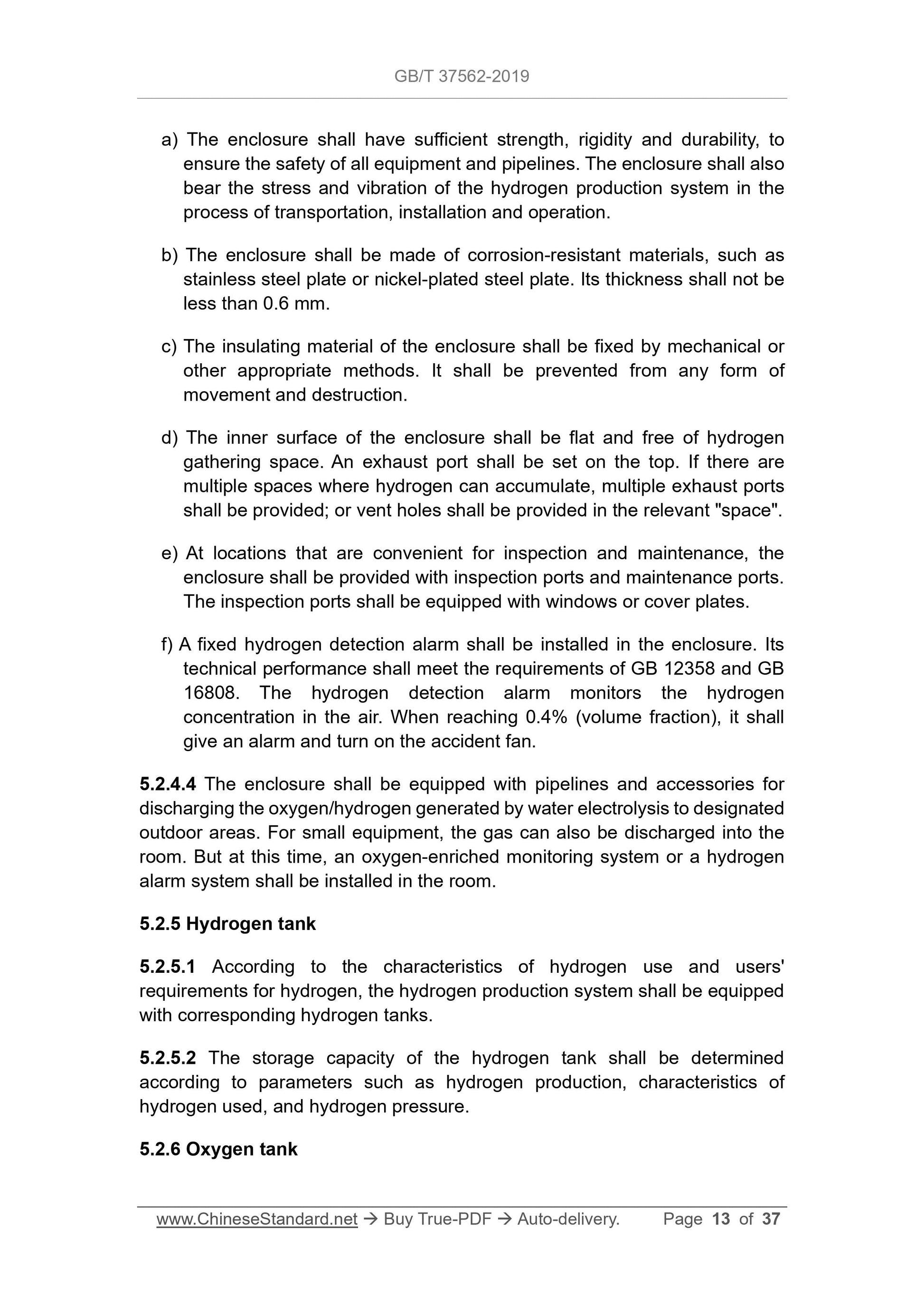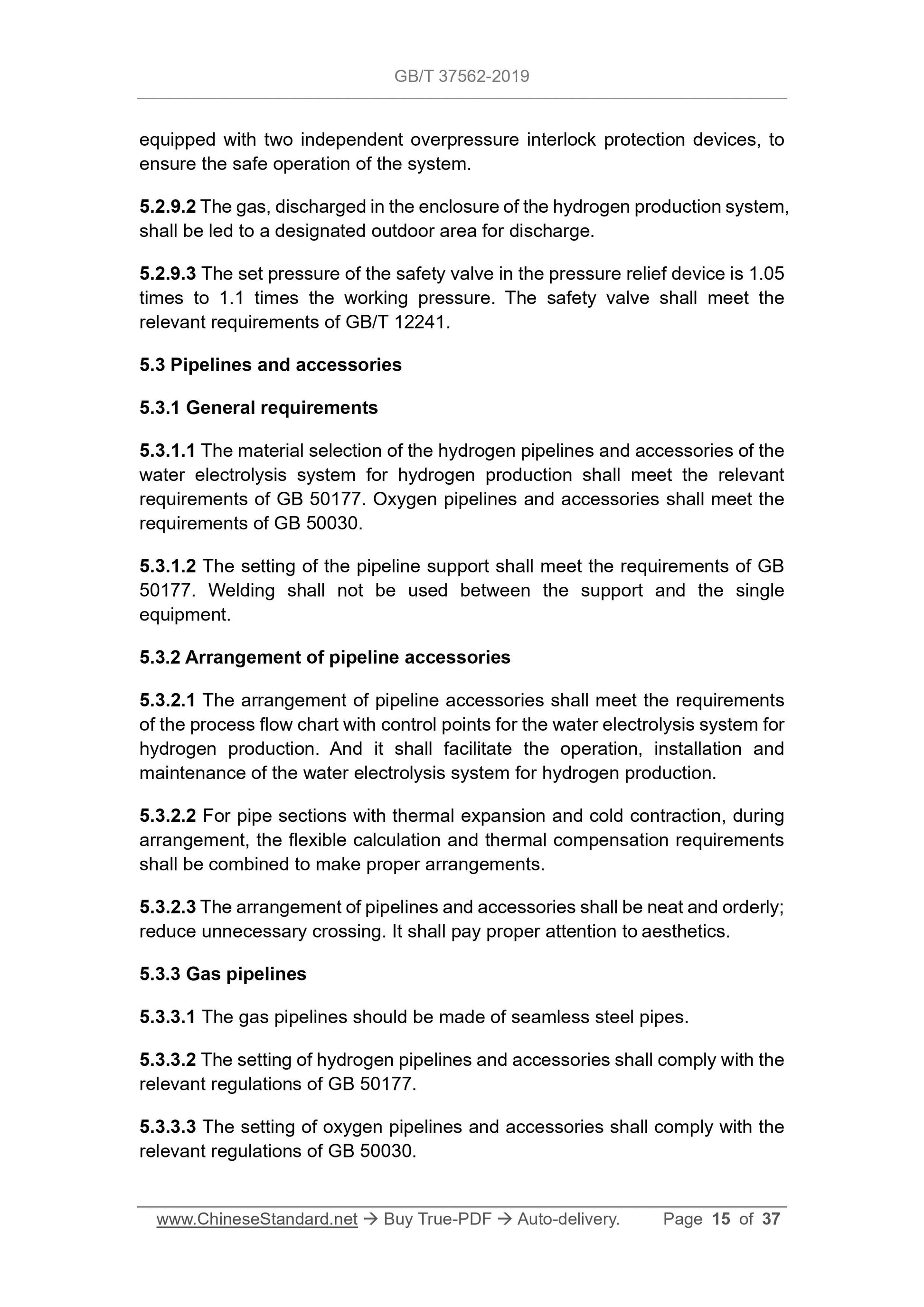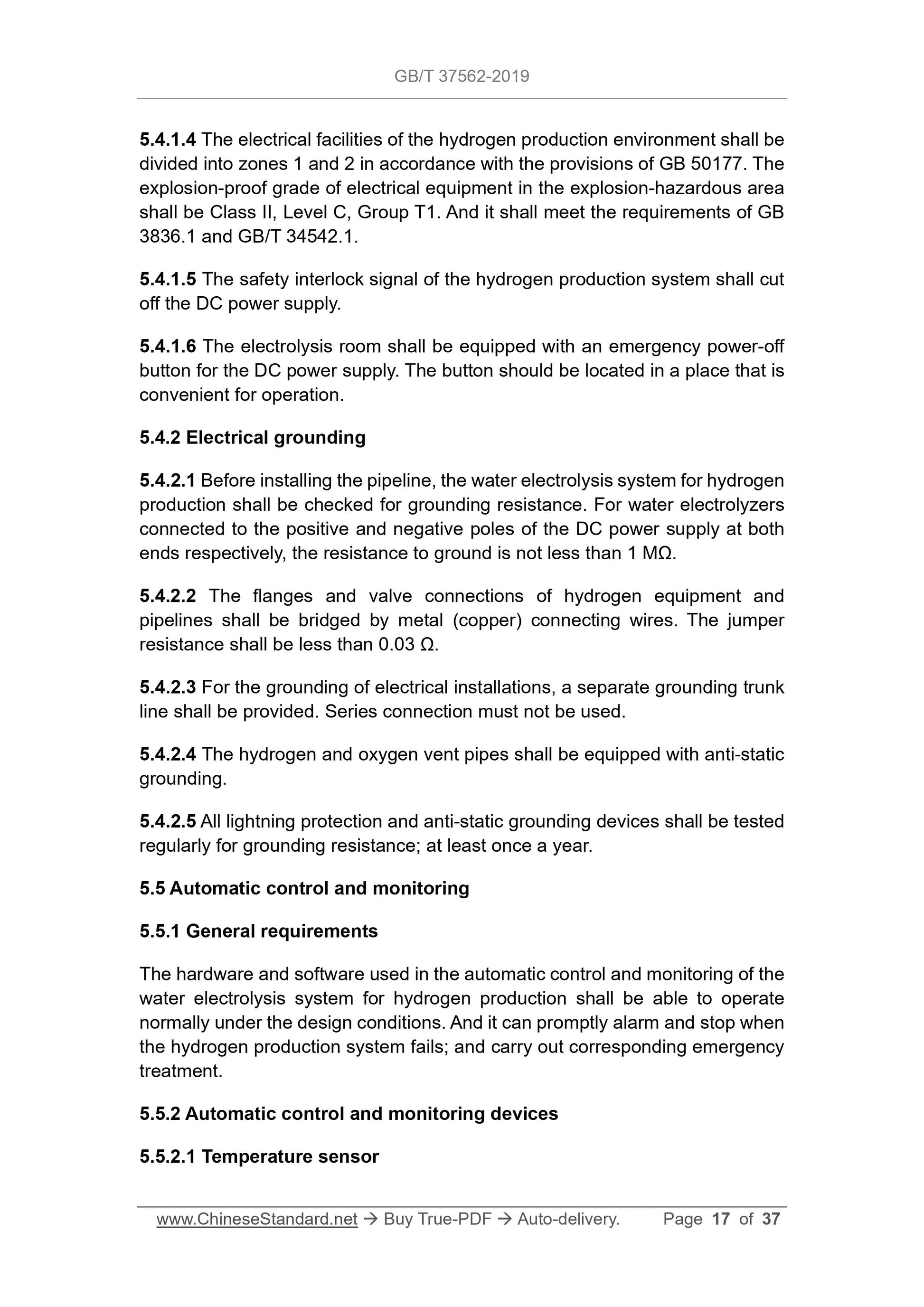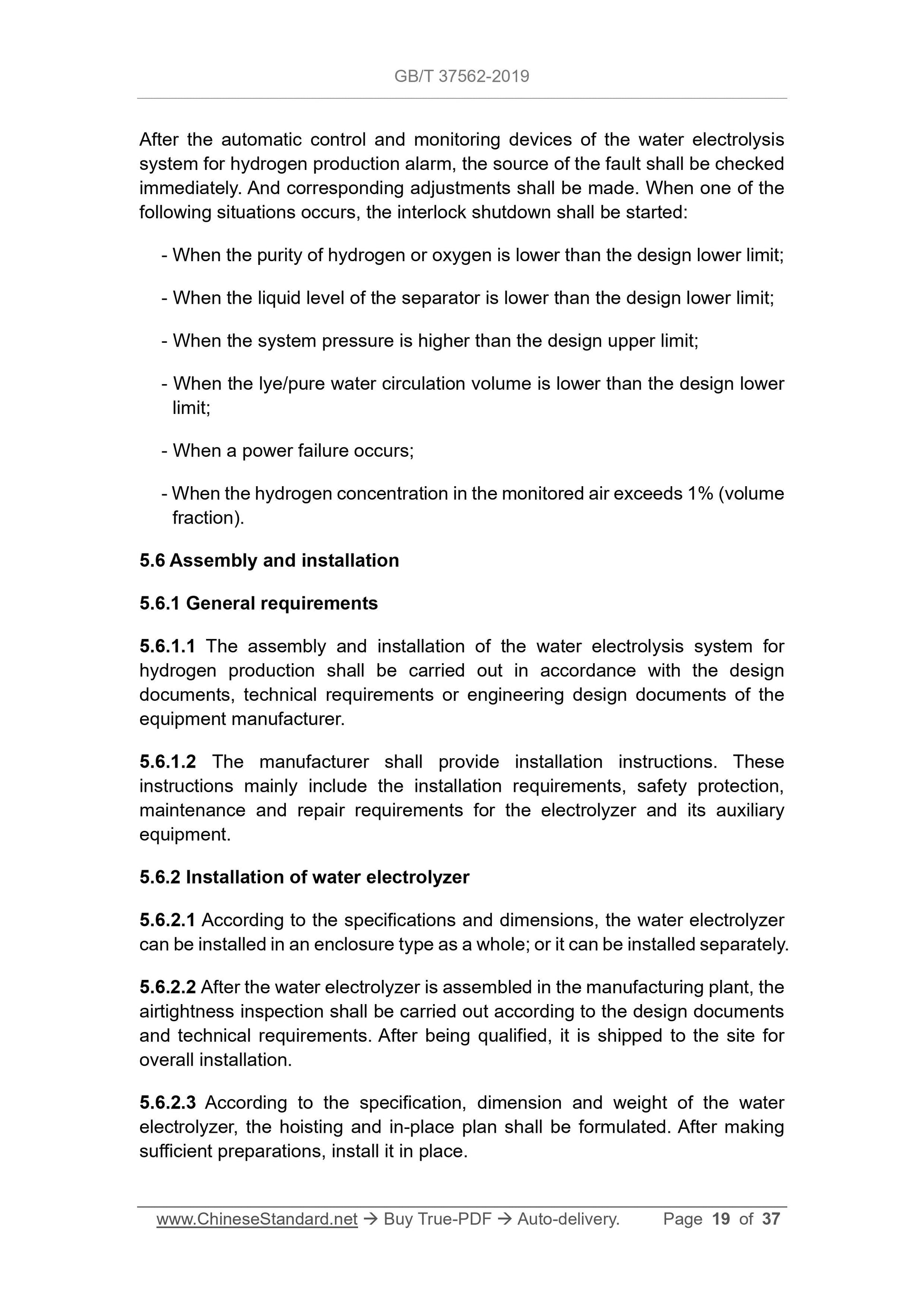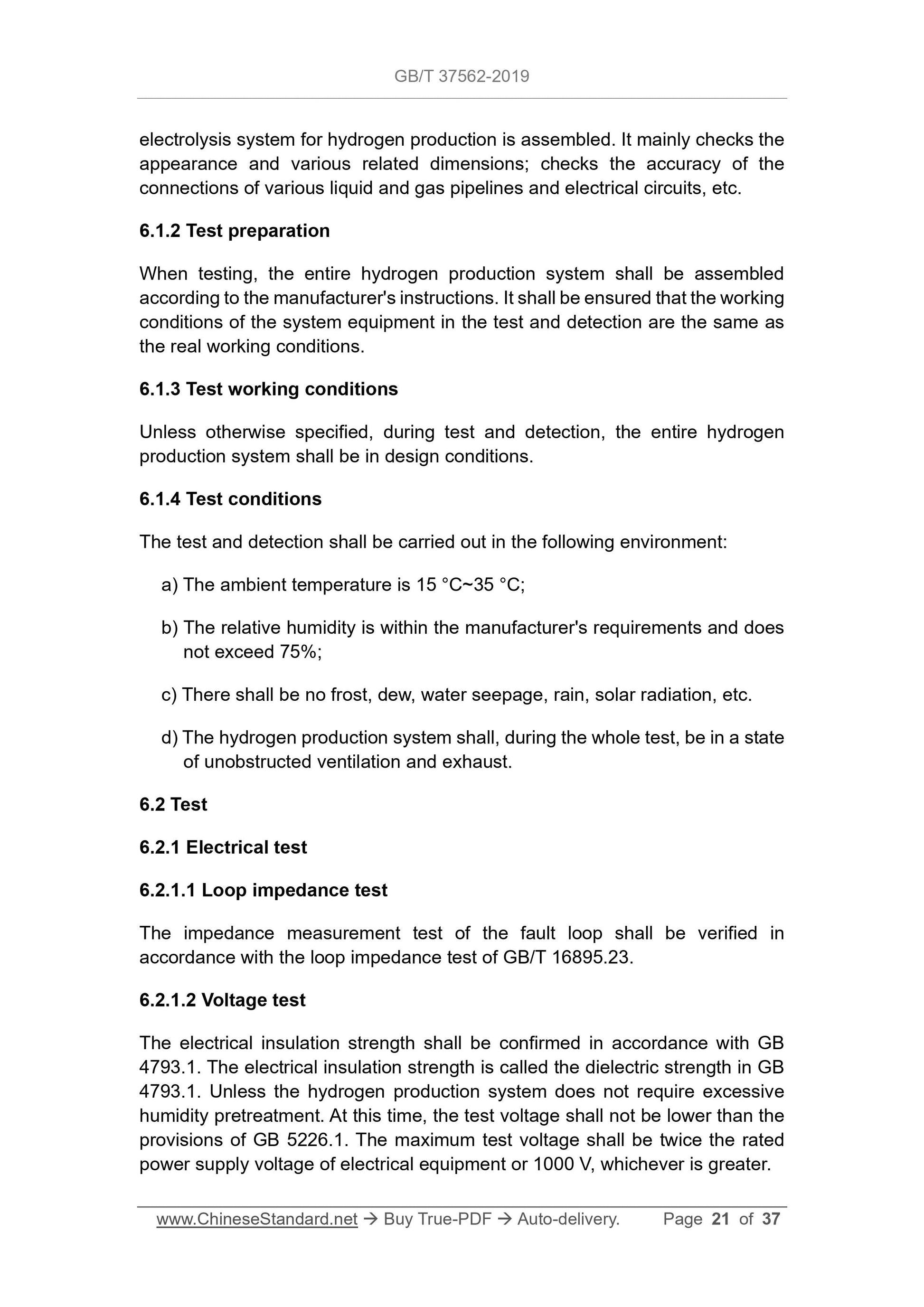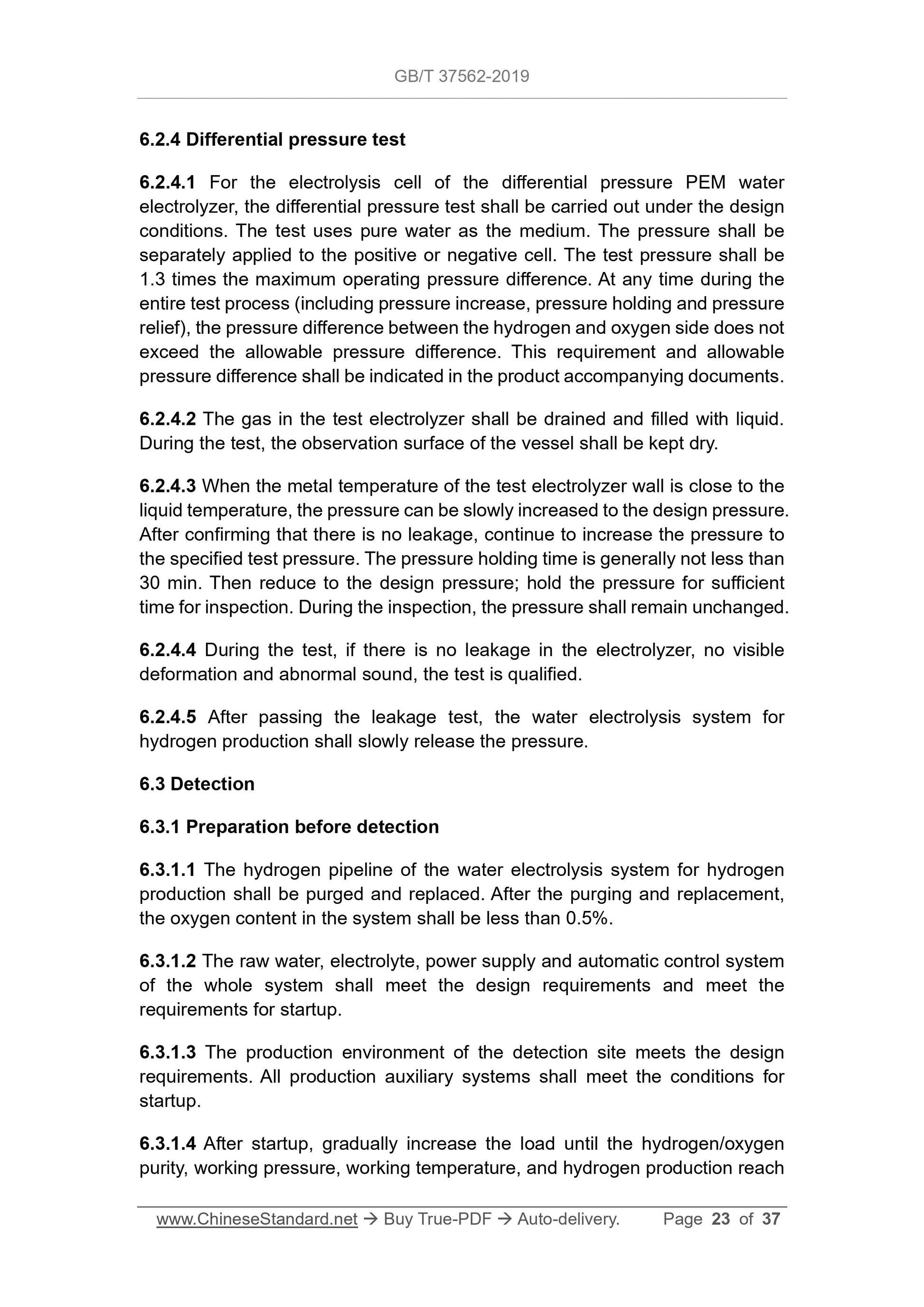1
/
of
11
www.ChineseStandard.us -- Field Test Asia Pte. Ltd.
GB/T 37562-2019 English PDF (GB/T37562-2019)
GB/T 37562-2019 English PDF (GB/T37562-2019)
Regular price
$315.00
Regular price
Sale price
$315.00
Unit price
/
per
Shipping calculated at checkout.
Couldn't load pickup availability
GB/T 37562-2019: Technical conditions of pressurized water electrolysis system for hydrogen production
Delivery: 9 seconds. Download (and Email) true-PDF + Invoice.Get Quotation: Click GB/T 37562-2019 (Self-service in 1-minute)
Newer / historical versions: GB/T 37562-2019
Preview True-PDF
Scope
This Standard specifies the terms and definitions, classification and designation,technical requirements, test and detection, marking, and packaging of
pressurized alkaline water electrolysis system for hydrogen production and
proton exchange membrane (PEM) water electrolysis system for hydrogen
production.
This Standard applies to pressurized alkaline water electrolysis and pressurized
PEM water electrolysis systems for hydrogen production, whose working
pressure is greater than or equal to 0.3 MPa and less than or equal to 5.0 MPa.
Basic Data
| Standard ID | GB/T 37562-2019 (GB/T37562-2019) |
| Description (Translated English) | Technical conditions of pressurized water electrolysis system for hydrogen production |
| Sector / Industry | National Standard (Recommended) |
| Classification of Chinese Standard | F19 |
| Classification of International Standard | 27.180 |
| Word Count Estimation | 22,211 |
| Date of Issue | 2019-06-04 |
| Date of Implementation | 2020-01-01 |
| Issuing agency(ies) | State Administration for Market Regulation, China National Standardization Administration |
Share
